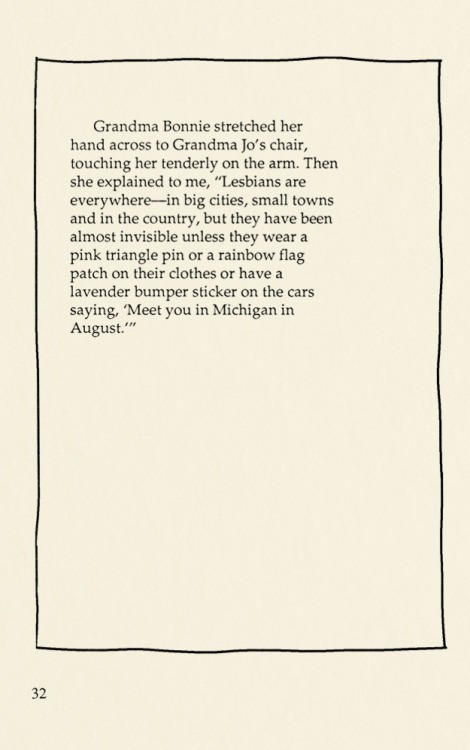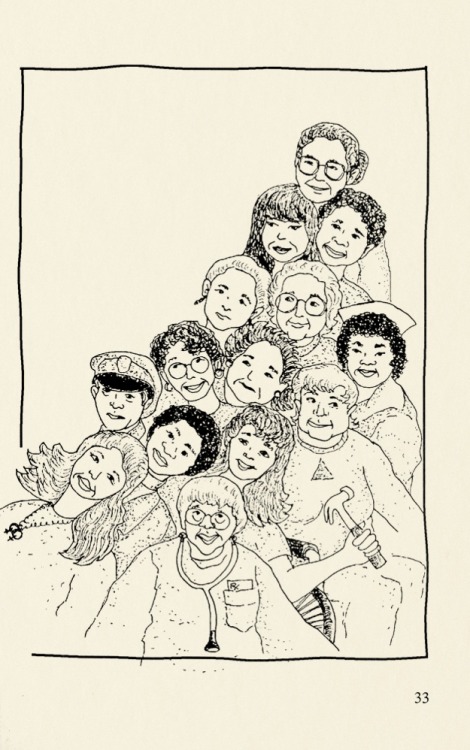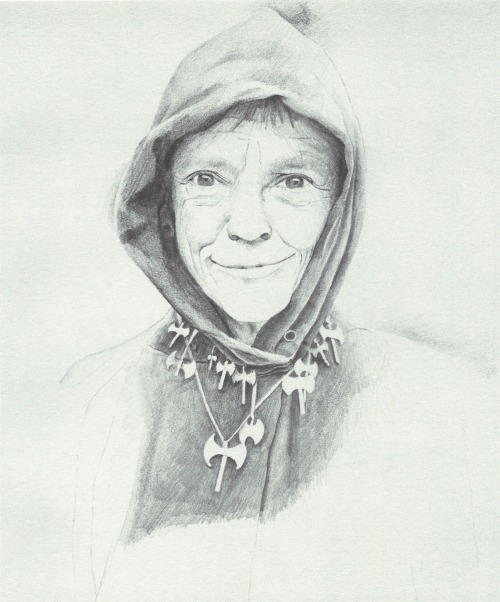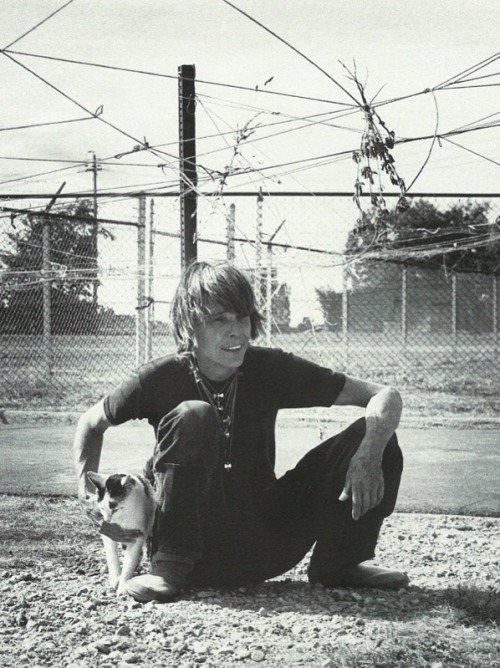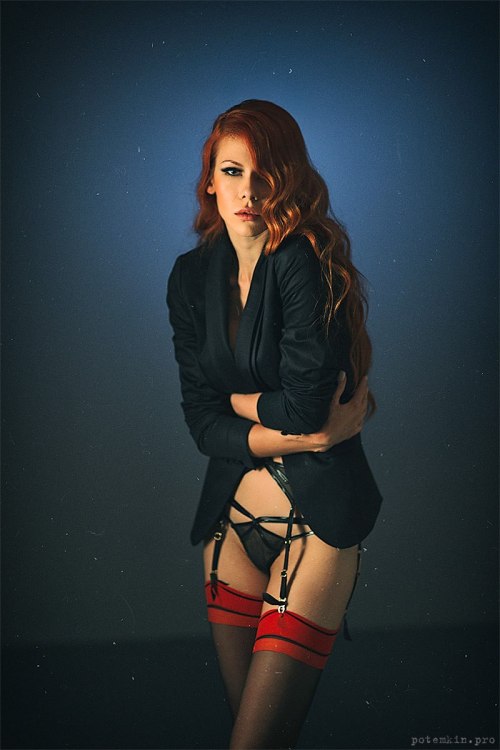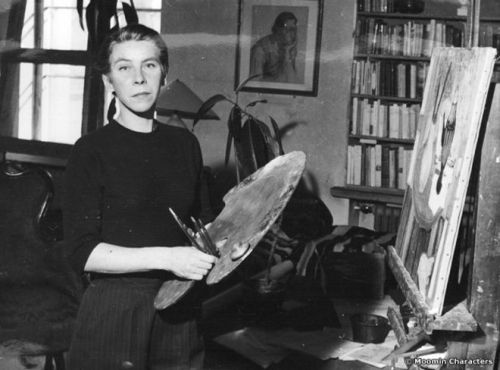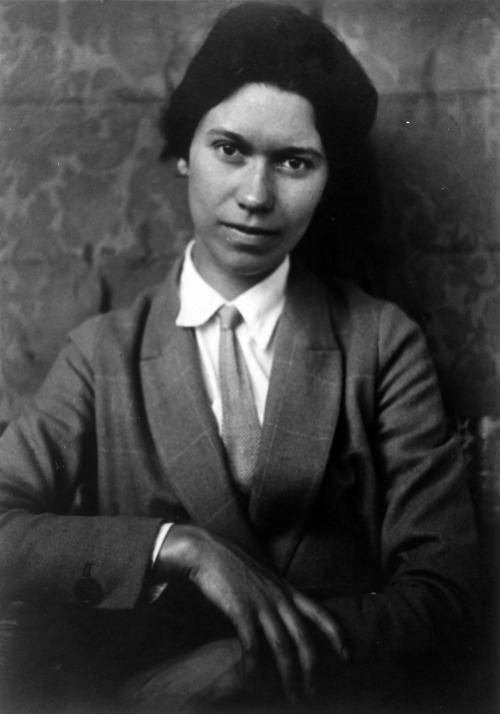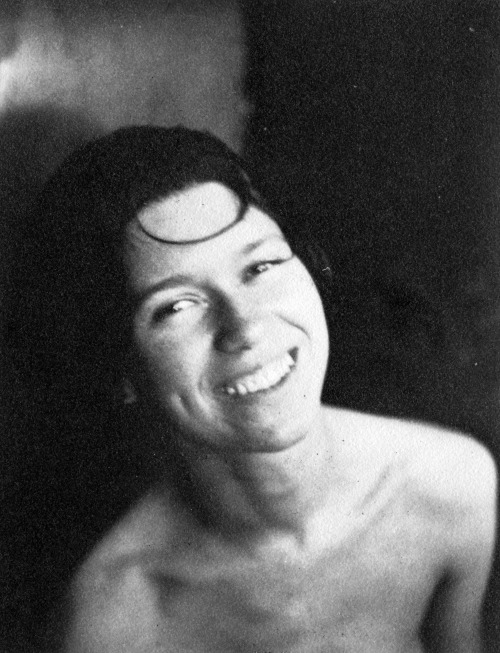#lesbian writers
“… Lesbians are everywhere — in big cities, small towns and in the country, but they have been almost invisible unless they wear a pink triangle pin or a rainbow flag patch on their clothes or have a lavender bumper sticker on the cars saying, ‘Meet you in Michigan in August.’”
— FromAmy Asks a Question: Grandma, What’s a Lesbian? (1996), written by Jeanne Arnold and illustrated by Barbara Lindquist, life partners and cofounders of Mother Courage Bookstore and Mother Courage Press.
Post link
Lesbian, feminist, writer, activist, artisan, and jeweler Kady (Kay) Van Deurs, “Axe Maker to the Queen” (1927-2003).
“Always and everywhere the double axe is a Goddess symbol. She has many names in many places. She is called The Queen of Heaven. So I call myself axe maker to The Queen … There was a time — a period of about 40,000 years — when almost everyone almost everywhere believed in The Goddess. Things must have been better for women then.” — Kady, in an ad for her jewelry (1979).
Top: “Drawing of Kady Wearing Axes Made by Many Women,” by Paula Gottlieb (1981).
Photos: (1) At the Women’s Encampment for a Future of Peace and Justice (Lynn Marie, 1983; Peace Encampment Herstory Project); (2) At the Seneca Army Depot (Barbara Adams, 1983); (3) At the “Hold Hands” demonstration on the George Washington Bridge (Diana Davies, 1973; NYPL); (4) At a gay pride crafts fair (Diana Davies, 1971; NYPL).
Bottom: Patterns for silver earrings, by Kady Van Deurs (Panhandling Papers, 1989).
(Kady was the author of The Notebooks That Emma Gave Me: The Autobiography of a Lesbian (1978) and Panhandling Papers (1989), a collection of excerpts, essays, letters, and drawings. She, along with her partner Pagan, was featured in and on the cover of JEB’s Eye to Eye: Portraits of Lesbians.)
Post link
“I see the need to bring up the idea of revolution because it can so easily become obscured. And as women we tend not to think in terms of revolution. The historian Blanche W. Cook has said that revolution is a process, not an event. It is a process which requires courage and vigilance. Theory and nourishment. Criticism and support. Anger. And it requires love — for ourselves — for each other. We are women and we have been taught to love: men children. Seldom — if ever — each other. Seldom — if ever — ourselves. We have been taught — and the dominant culture continues to tell us — to direct our affection outward: not inward. To choose to love both ourselves and each other is a revolutionary choice.
“As a young woman I dreamed of a woman who would love me. I had been fortunate — I had been deeply loved by a woman when I was a child. After her death I withdrew into this longing for a woman who would draw this emotion from me again. And who would give it back. Who would hold me and stroke me and let me sleep close to her.
“When I next loved a woman, we became lovers, but this was not a withdrawal. Another level of life opened to me, in which I experienced a release of velocity and momentum which seemed only right and well deserved. The love of woman lover for woman lover — as I have experienced it — is the most private of emotions. I cannot share this love with any other woman — but I can work to allow it to inform relationships with other women. Then this love becomes a source of sustained revolutionary commitment …
“As I try to write this, I am struck by how corny it feels to me to be writing about love. Writing about love can make you feel corny, and it can make you feel self-righteous. And so I need to say that I am serious and want to be taken seriously. That by love I do not mean easy escapism into another woman’s arms. And I need to say that I am not self-righteous — I am in struggle to love and trust women in my day-to-day life. We need to allow ourselves complexity in our feelings toward each other. We need to admit our anger as well as our love for each other. But we must avoid endangering our emotions with oversimplification. This is a time for us in which we are beginning to face issues which are complicated but which will bring us, through our efforts, into another place on the lesbian/feminist continuum.”
—Michelle Cliff (November 2, 1946 - June 12, 2016), “Notes for a Magazine,” Sinister Wisdom #17 (1981).
The Sunflowers
by Mary Oliver
…
Come with me
into the field of sunflowers.
Their faces are burnished disks,
their dry spines
creak like ship masts,
their green leaves,
so heavy and many,
fill all day with the sticky
sugars of the sun.
Come with me
to visit the sunflowers,
they are shy
but want to be friends;
they have wonderful stories
of when they were young -
the important weather,
the wandering crows.
Don’t be afraid
to ask them questions!
Their bright faces,
which follow the sun,
will listen, and all
those rows of seeds -
each one a new life!
hope for a deeper acquaintance;
each of them, though it stands
in a crowd of many,
like a separate universe,
is lonely, thelongwork
ofturningtheirlives
intoacelebration
isnoteasy. Come
and let us talk with those modest faces,
the simple garments of leaves,
the coarse roots in the earth
so uprightly burning.
Mary Oliver reading her poem Wild Geese.
“Wild Geese” by Mary Oliver (1935-2019)

Don’t Whisper Too Much and Portrait of a Young Artiste from Bona Mbella by Frieda Ekotto
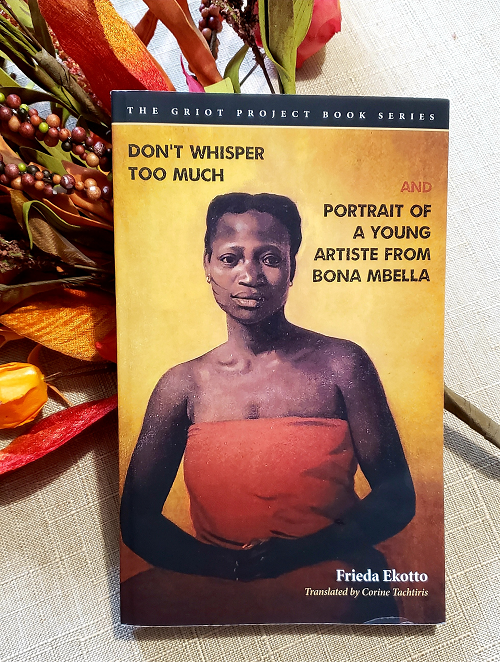
“Everyone knew what children, young girls, women had to endure. They kept silent, even though they were bursting with remorse. They told themselves, “Let the secret be kept as long as the ancestors shall live.” But every secret, whatever it may be, is uncovered someday.”
Don’t Whisper Too Much is a novel first published in 2001 (though at under 100 pages more regarded in English as a novella) by a Cameroonian lesbian author whose queer work was the first such fiction to portray African women-loving-women positively.
Yet this book surprisingly put me off a bit. Perhaps, I am simply culturally ignorant of context since while I know a good deal about French literature, I cannot claim the same about Cameroon where author Frieda Ekotto was born and too where she has set these stories. Maybe my literacy is slipping as I was rather preoccupied with the generational patriarchal cycle depicted that link these women with abuse. Similar to points in the introduction by Lindsey Green-Simms, I think the nuggets found here are about silence and confinement— the many methods of oppression and resistance how one may or may not engage with such. The work is also interesting in the way it’s written. Rhythmical, different narrators, voices through texts in text, translated expertly to English in 2019 by Corine Tachtiris. Yes, writing quite a long time coming both in original publication and new editions.
Portrait of a Young Artiste from Bona Mbella made up of short vignettes originally published in 2010, and the second part of the book, may be more approachable in style though, colloquial. These pieces written in majority from the perspective of a young woman named Chantou.But again, neither light reading for what is a small tome.
I’d propose these works for those interested in ‘path-breaking’ literature.
Don’t Whisper Too Much and Portrait of a Young Artiste from Bona Mbella by Frieda Ekotto, is available in English translated by Corine Tachtiris, in print and digital from Bucknell University Press
Portraits of a young Elsa Gidlow, circa 1920s.
Elsa Gidlow was a lesbian poet, philosopher, and woman of letters. Her book On a Grey Thread (1923) was the first collection of openly lesbian love poetry published in North America, and her autobiography, Elsa: I Come With My Songs (1986) was the first lesbian autobiography whose author did not publish under a pseudonym. After her death, her papers were gifted to the GLBT Historical Society.
Post link

